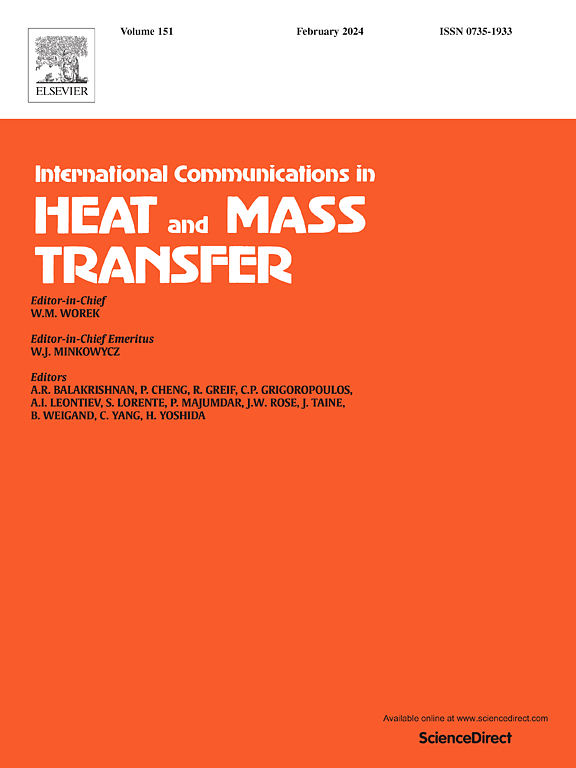Numerical study of droplets impacting on flat and cone-arrayed surfaces
IF 6.4
2区 工程技术
Q1 MECHANICS
International Communications in Heat and Mass Transfer
Pub Date : 2025-02-22
DOI:10.1016/j.icheatmasstransfer.2025.108729
引用次数: 0
Abstract
The dynamic behaviour of droplets impacting on both flat and cone-arrayed microstructural surfaces is investigated using an improved colour-gradient lattice Boltzmann method. We first study the effect of the Reynolds number () on the dynamic behaviour of the impacting droplet by fixing the Weber number () at 10. As increases, the maximum dimensionless mass centroid of the droplet () for the droplet impact on a cone-arrayed surface is first larger and then smaller than that on a flat surface, indicating that the cone-arrayed surface changes from promoting to preventing the rebound of the droplet from the solid surface. Next, the effect of on the dynamic behaviour of the impacting droplet is studied by fixing . For the droplet impact on a flat surface, first increases and then decreases with increasing , and its maximum value is reached near . For the droplet impact on a cone-arrayed surface, monotonically decreases with increasing . Finally, the study concludes with phase diagrams that illustrate how the droplet rebound patterns and maximum rebound height vary with and , providing valuable insights for optimizing textured surface designs in applications requiring precise droplet control.
求助全文
约1分钟内获得全文
求助全文
来源期刊
CiteScore
11.00
自引率
10.00%
发文量
648
审稿时长
32 days
期刊介绍:
International Communications in Heat and Mass Transfer serves as a world forum for the rapid dissemination of new ideas, new measurement techniques, preliminary findings of ongoing investigations, discussions, and criticisms in the field of heat and mass transfer. Two types of manuscript will be considered for publication: communications (short reports of new work or discussions of work which has already been published) and summaries (abstracts of reports, theses or manuscripts which are too long for publication in full). Together with its companion publication, International Journal of Heat and Mass Transfer, with which it shares the same Board of Editors, this journal is read by research workers and engineers throughout the world.

 求助内容:
求助内容: 应助结果提醒方式:
应助结果提醒方式:


